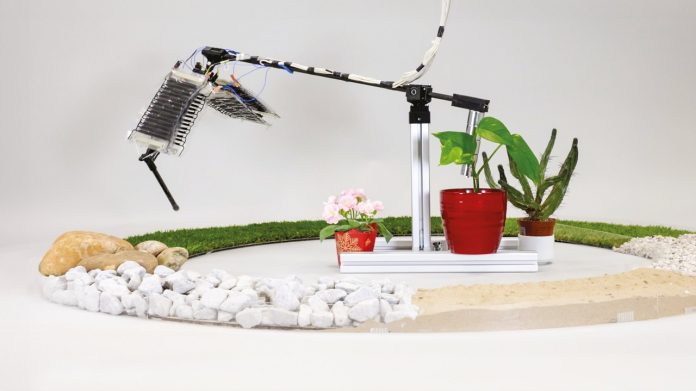
For nearly 70 years, robots have been built using electric motors, a technology that’s been around for over 200 years.
Whether used in factories or walking robots, these machines rely on motors for movement.
However, this design limits their mobility compared to living creatures like humans and animals, which use muscles.
A team of researchers from ETH Zurich and the Max Planck Institute for Intelligent Systems has developed a robotic leg powered by artificial muscles, making it more efficient and adaptable than those using traditional motors.
This new design allows the robotic leg to perform high jumps, move quickly, and even detect and react to obstacles—without needing complex sensors.
The project was led by Robert Katzschmann at ETH Zurich and Christoph Keplinger at MPI-IS, with doctoral students Thomas Buchner and Toshihiko Fukushima playing key roles in the research.
How It Works
The robotic leg uses special artificial muscles called HASELs, which are like oil-filled plastic bags that work through electrostatic forces. These muscles are connected to the robotic skeleton with tendons, much like human muscles are attached to bones.
When a voltage is applied to the electrodes on the bags, the electrodes attract each other, pushing the oil to one side and causing the muscle to shorten.
This movement mimics how muscles work in living creatures. By controlling these artificial muscles, the robotic leg can bend and stretch in both directions.
Better Than Electric Motors
One big advantage of the muscle-powered leg is its energy efficiency. In traditional motorized robotic legs, a lot of energy is wasted as heat, especially when holding a position. The artificial muscle leg, however, stays cool because it doesn’t require continuous electricity to maintain a position, making it much more efficient.
Most robots using electric motors also need additional equipment like fans to manage heat, which adds complexity and consumes more energy. But the muscle-powered leg doesn’t have this problem, making it ideal for tasks requiring precise and energy-efficient movement.
Adapting to Terrain
One of the most impressive features of the new robotic leg is its ability to adapt to uneven terrain. When it lands after a jump, the leg automatically adjusts its angle based on the surface—whether it’s hard or soft—just like how humans bend their knees without thinking when they walk on uneven ground.
Unlike electric motors that need sensors to monitor the angle of movement, the artificial muscles adjust naturally, allowing the robot to interact more smoothly with its environment.
Future Possibilities
Although the technology is still in its early stages, the researchers are excited about the potential of these artificial muscles. The field of electrohydraulic actuators, which powers these muscles, has only been around for six years. While this type of muscle might not replace heavy machinery on construction sites, it has many other possible applications, such as robotic arms that can delicately handle objects like eggs or tomatoes.
For now, the robotic leg is limited to jumping in circles, but future improvements could lead to fully walking robots. Researchers believe that one day, battery-powered robots with artificial muscles could be used for tasks like search and rescue.
This new technology opens the door to more efficient and adaptable robots, bringing them closer to moving like living creatures.
Source: ETH Zurich.



